Russian reception of tank combat - ram attack
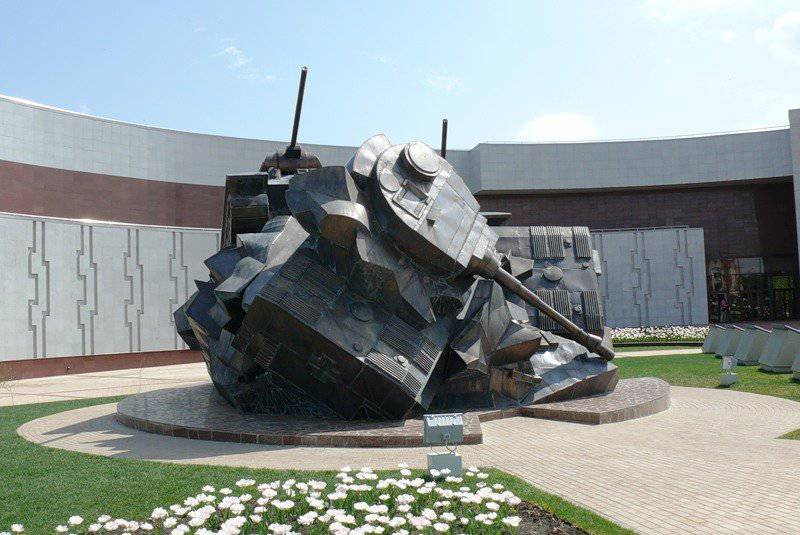
Russia was the birthplace of not only air, but tank ram. And it was actively used during the Great Patriotic War. First in the world tank the ram was made by Simon Kuzmich Osadchy (1904 - November 13, 1936), during the years of the Spanish Civil War 1936 — 1939.
Osadchy was drafted into the Red Army in 1926, then trained in an armored school. In Spain, he commanded a tank platoon, fought on a light T-26 tank. October 29 1936, the first tank battle in the world against tanks took place. In the battle near the settlement of Sesenia (30 km south of Madrid), Soviet tanks came together - companies under the command of captain P. Arman and Italian Ansaldo light tanks (they were armed with 2 8-mm paired machine guns before modernization). Soviet tankers won a landslide victory by destroying several enemy tanks. In this battle, the crew of Osadchego, made the world's first tank ram, the T-26 pushed into the gorge the Italian tank Ansaldo. The raid of the Soviet tankers was very successful, they destroyed and scattered up to two battalions of infantry and two cavalry squadrons, destroyed 12 guns, two or three dozen vehicles, and destroyed the enemy’s tank unit on the same day. For this battle, tankers Arman, Pogodin, Osadchy received the first titles of Hero of the Soviet Union for their feats of arms (December 31 of 1936). Osadchy did not live to World War II - in a battle 3 November 1936, his tank destroyed two artillery batteries and six machine-gun points. But a shell hit the tank, an explosion blew off both of his legs, on November 13 he died in the hospital.
The ram was a tactical device when, using its mobility and armor, the tanks broke into enemy firing positions, rammed artillery guns, machine-gun points, various enemy vehicles. As well as incapacitating enemy tanks by collision, enemy armored vehicles were usually overturned or immobilized (an enemy tank, the SPG could lose a caterpillar). In addition, tank crews could ram street barricades or brick walls of buildings, crush planes. The success of the ram was largely dependent on the training of the crew, his skill. A big role in it was played by the fighting spirit of the tankers, their willingness to die, but to complete the task. In total, during the Great Patriotic War, our tank crews made rams up to 160.
Especially many rams were committed in 1943 year. For example, in a battle in Prokhorovka 12 on July 1943 of the year (one of the famous episodes of the Battle of Kursk), Soviet tank crews performed more 20 tank rams, and in the 50 days of the Kursk battle more than 50. Thrusters destroyed not only the light and medium armored vehicles of the enemy, but also happened, and heavy "Tigers". When struck by the hull, the tanks failed, the German armored vehicles were torn caterpillars, armor burst, leading and support rollers were deformed. Straight rams were committed, as a rule, in special cases, when the ammunition ran out, the gun was damaged, and the battle continued. Sometimes they were attacked on a sudden encounter with enemy vehicles on the streets of cities and towns, as well as in a close tank battle, when tanks broke into the battle formations of the enemy. They tried to ram into the side of the tank, which could lead to the overturning of the enemy machine. It happened that tanks exploded due to the detonation of ammunition, or because of the ignition of fuel spilled from damaged tanks.
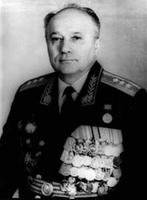 One of the first rams of the Great Patriotic War was made by Pavel Danilovich Gutz (28 of September 1919 of the year - 5 of May of 2008 of the year). He was born in a peasant family, by the time the Great Patriotic War began, he graduated with honors from the 2-e Saratov Heavy Tank School. Pavel Gutz was sent to the city of Lviv (Kiev Special Military District). In mid-June 1941, the young lieutenant Gudz arrived in the 63 tank regiment of the 32 tank division (commanded by Colonel Efim Pushkin) of the 4 mechanized corps (commander Major General Andrei Vlasov) as part of the 6 army.
One of the first rams of the Great Patriotic War was made by Pavel Danilovich Gutz (28 of September 1919 of the year - 5 of May of 2008 of the year). He was born in a peasant family, by the time the Great Patriotic War began, he graduated with honors from the 2-e Saratov Heavy Tank School. Pavel Gutz was sent to the city of Lviv (Kiev Special Military District). In mid-June 1941, the young lieutenant Gudz arrived in the 63 tank regiment of the 32 tank division (commanded by Colonel Efim Pushkin) of the 4 mechanized corps (commander Major General Andrei Vlasov) as part of the 6 army.On Saturday, 21 June 1941, the platoon commander, Lieutenant Pavel Hutz took over duty on the part. On the morning of June 22, the regiment tankers were alerted. The control platoon (five KV-1 heavy tanks, two T-34 medium tanks and two BA-10 armored vehicles), commanded by Hutz, headed the regimental column towards the western border in the Kristopol area. The first to meet the vanguard of the Nazis, Hutz led a platoon to attack and destroyed the enemy cannon. By 12 hours of the day, Lieutenant Gudzia’s connection had already destroyed five German tanks, three armored personnel carriers and several vehicles.
On the same day, the commander KV-1 Gudzya in 8 km from Yavorovo under the control of the driver Galkin (in the past he was a test driver of tanks in the Leningrad Kirov plant) struck a sliding blow into the steering wheel of an enemy medium tank T - III, knocked him Caterpillar and then a strong blow dropped into a ditch. It is believed that this was the first tank ram not only in the division, but also in the entire Red Army. In addition, his tank rammed an enemy armored personnel carrier.
In addition, there is evidence that tank tankers of the 5 Panzer Division (commander Colonel Fedor Fedorov) used tank rams on the first day. This tank division entered the 3-th mechanized corps, its commander was Major General of the tank forces Alexei Kurkin, 11-th army of the Baltic Special Military District and was stationed in the Lithuanian city of Alytus. The 5 Tank Division was armed with mostly BT-7 and T-26 light tanks and T-28 medium tanks, armored cars and a number of new T-34 medium tanks. A fierce battle took place on the banks of the Neman River. During one of the fights, several Russian cars with a flank attack destroyed half a dozen German tanks, some of them were rammed and thrown into a ditch.
Gutz became famous not only the first (or one of the first) tank rams in the Great Patriotic War, but also a unique battle, when his crew destroyed ten enemy tanks in one battle. After the November 7 parade of 1941, his tank battalion participated in fierce battles in the Rokossovsky 16 Army band. By the beginning of December 1941, after almost a month of fierce battles, only one KV-89 tank and several light tanks remained in the 1-th separate tank battalion of Gudz. The enemy - part of the German 10 Panzer Division, occupied the village near Moscow Nefed'evo in 35 km from Moscow. The commander of a tank battalion, captain Konstantin Khorin, invited Gudz’s chief of staff and assigned him the task of knocking the enemy out of the village.
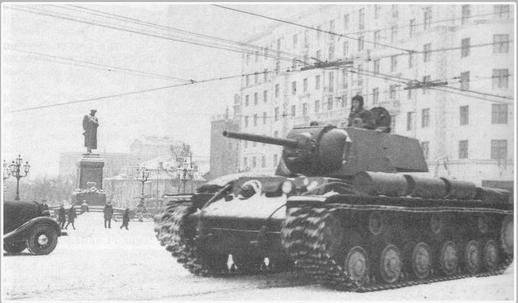
Lieutenant P. D. Gudz in his KV-1 tank is moving from Red Square after participating in the November 7 Military Parade of the 1941 of the year.
One tank supported the attack of the Soviet infantry, taking the battle with the enemy's 18 tanks. During the fierce battle, the Soviet tankers not only knocked down and destroyed the enemy's 10 vehicles, but also supported the advance of infantry units, the Klim Voroshilov tank crushed the tracks and shot German infantry that could not withstand the onslaught. On the battlefield battle left until 400 Germans. When the battle was over, 29 dented dents from enemy shells on the heroic tank.
The tanker ace brilliantly served his homeland in the future. In the battles for Stalingrad was seriously wounded (two bullet wounds and 6 shatters in the chest). But after the hospital returned to the front. In Zaporozhye in the Dneproges region, the Gudzya tank was shot down. Two crew members of the KV died, and the commander was seriously wounded. Gudzia had damaged her left clavicle and her left hand. Pavel Danilovich cut off the remnants of the brush with a knife, from an already padded tank, destroyed two German heavy tanks "Tigr". After a new hit in the HF, Hudz, who lost consciousness, pulled a driver out of the tank. After treatment, Gutz, having received a prosthetic arm, again voluntarily returned to the front. After the war he became a brilliant teacher, professor, doctor of military sciences, he rose to the rank of colonel general of tank forces.
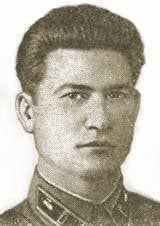 Hero of the Soviet Union, Captain Alexei Petrovich Bosov (21.03.1910 - 18.11.1941). In 1932, he graduated from the workers' faculty at the Leningrad Institute of Railway Engineers. Then, on a party mobilization, a young man was sent to study at the Ulyanovsk armored school named after V. I. Lenin. Having finished it, Alexey received the rank of middle commander and served in the Trans-Baikal Military District. He participated in the battles at Halkin Gol. On August 27, during a battle in the valley of the Haylastin-Gol River (a tributary of the Khalkhin-Gol), his company inflicted a flank attack on the Japanese force. In a fleeting cruel battle, the Soviet tank crews of Bosova destroyed guns, machine guns by throwing hand grenades through the hatches of the machines: 10 artillery guns and 220 soldiers and officers of the enemy, 30 people were captured. For the Khalkhingol offensive, Bosov received the title of Hero of the Soviet Union and the Order of Lenin.
Hero of the Soviet Union, Captain Alexei Petrovich Bosov (21.03.1910 - 18.11.1941). In 1932, he graduated from the workers' faculty at the Leningrad Institute of Railway Engineers. Then, on a party mobilization, a young man was sent to study at the Ulyanovsk armored school named after V. I. Lenin. Having finished it, Alexey received the rank of middle commander and served in the Trans-Baikal Military District. He participated in the battles at Halkin Gol. On August 27, during a battle in the valley of the Haylastin-Gol River (a tributary of the Khalkhin-Gol), his company inflicted a flank attack on the Japanese force. In a fleeting cruel battle, the Soviet tank crews of Bosova destroyed guns, machine guns by throwing hand grenades through the hatches of the machines: 10 artillery guns and 220 soldiers and officers of the enemy, 30 people were captured. For the Khalkhingol offensive, Bosov received the title of Hero of the Soviet Union and the Order of Lenin.The Great Patriotic War found Captain Alexei Bosov studying at the Military Academy of Armored Forces. But when the Germans approached Moscow, the brave tankman asked for the front. The captain became the company commander in the battalion of heavy KV tanks, he was sent to Volokolamsk, on this section of the Western Front were some of the most brutal battles for Moscow. Together with the soldiers of the legendary Panfilov Division, a separate tank battalion beat off the furious attacks of the Nazis. 18 November 1941, in the area of the village of Small Towns, his company was assigned to dislodge the enemy from the village of Denkovo. Against 5 KV 12 German tanks were abandoned, the oncoming battle began. In the course of this battle, the Bosova KV destroyed 8 enemy tanks - 4 of them were rammed. In addition, the Soviet tank crews destroyed an enemy infantry company, and Bosova's tank was crushed by a German reconnaissance aircraft, which was taxiing for takeoff. Unfortunately, the death found on this day and the hero, his crew died.
Soviet tankers used rams against enemy planes on the ground. 11 January 1944 of the 49 tank tank brigade crushed 17 enemy aircraft at the airport of the Polish city of Lübeck. 28 March 1944, tank crews of the 64 Guards Tank Brigade at the airport of Chernivtsi city, fired on cannons and machine guns and attacked the enemy’s 30 aircraft. 17 January 1945, a group of tanks under the command of I. Kravchenko from the 47 Guards Tank Brigade with rams and tank fire eliminated 20 airplanes at the airfield near the Polish city of Sochaczew.
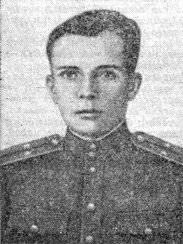 The crew of the guard lieutenant Dmitry Yevlampievich Komarov (08.11.1922 - 05.09.1944) made a ram of an armored train (!). Komarov was born into a peasant family, before the war he worked as an accountant on the railway. With the beginning of the war drafted into the army and was trained in the Blagoveshchensk tank school. In April, 1943 was sent to the front as commander of the medium tank T-34.
The crew of the guard lieutenant Dmitry Yevlampievich Komarov (08.11.1922 - 05.09.1944) made a ram of an armored train (!). Komarov was born into a peasant family, before the war he worked as an accountant on the railway. With the beginning of the war drafted into the army and was trained in the Blagoveshchensk tank school. In April, 1943 was sent to the front as commander of the medium tank T-34. In the summer of 1944, he participated, as part of the 15 of the Guards Tank Brigade of the 1 of the Guards Tank Don Corps of the 1 of the Belarusian Front, in Operation Bagration. 25 June 1944, his team received the task to cut the railway Luninets - Bobruisk and beat off the station of Black Brody.
Komarov's tank was the first to burst into a populated area, breaking through the fire of 10 and German Artsturm self-propelled artillery launchers (armed with the Stun III 75-mm cannon). At that moment, a German armored train opened fire on Soviet tanks, and the return fire could not harm him. Komarov's tank was set on fire, and the commander himself was wounded, but the tank was on the move. Then Komarov and tank mechanic Mikhail Bukhtuev decided to ram the enemy's armored train. At maximum speed, the tank, engulfed in fire, crashed into an armored train, two armored platforms were shot down and overturned, the train stopped. Inspired by the comrade's feat, the brigade’s tanks liberated the station. When struck, the driver Bukhtuyev died, the wounded Komarov was able to get out and firing from the Germans, hid in the forest. Scouts found him a few days later.
The brave tanker did not live up to the Victory. 5 September 1944 of the year in a fierce night battle for a bridgehead on the west bank of the river Narev Dmitry Komarov was killed. September 26 1944 was awarded the title Hero of the Soviet Union (posthumously).
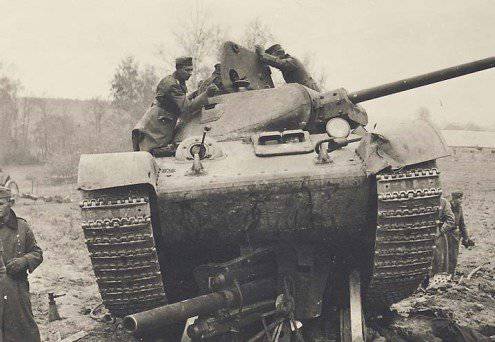
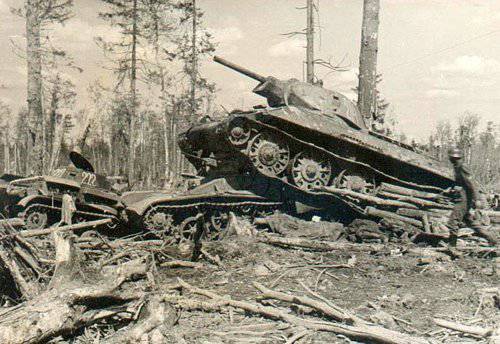
Information